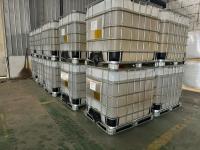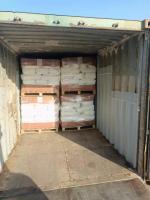Our Products
Product Center / equivalennt mode of polyamine C-572 can be replaced by Chinafloc-polyamine

Polyamine, a class of water-soluble cationic polymers, is widely used in various industries for its powerful coagulation, flocculation, and charge neutralization capabilities. Its unique structure, typically based on polyalkylene polyamines or other modified amine monomers, provides high cationic charge density and excellent compatibility with both organic and inorganic substances. The primary application of polyamine lies in water and wastewater treatment, where it serves as an effective primary coagulant or coagulant aid. However, its benefits extend across industries such as pulp and paper, textiles, oil and gas, mining, and food processing. This article explores the major applications of polyamine across these sectors, with a focus on its functional roles and benefits.
1. Water and Wastewater Treatment – Primary Application
1.1 Municipal Wastewater Treatment
In municipal water treatment facilities, polyamine is extensively used as a liquid cationic coagulant for removing suspended solids, colloidal matter, organic pollutants, and color from surface and groundwater. Its primary function is to neutralize the negative charges of particles, thereby promoting agglomeration into larger flocs that can be more easily removed by sedimentation or filtration.
Polyamine is commonly used in:
-
Clarifiers for turbidity reduction
-
Pre-treatment for ultrafiltration or reverse osmosis
-
Color and TOC (total organic carbon) reduction
-
Sludge thickening and dewatering
Compared to inorganic coagulants like aluminum sulfate or ferric chloride, polyamine offers several operational advantages:
-
Lower required dosage
-
Reduced sludge production
-
Broader pH working range (typically 4–10)
-
No additional metal ions added to treated water
1.2 Industrial Wastewater Treatment
In industrial effluent treatment, polyamine is employed to treat complex wastewater containing oils, greases, dyes, suspended solids, and emulsified organics. Key industries using polyamine for effluent treatment include:
-
Petrochemical and refinery plants
-
Steel and metal industries
-
Textile dyeing and printing
-
Food and beverage processing
-
Pulp and paper mills
In these sectors, polyamine serves as:
-
A primary coagulant for suspended and colloidal solids
-
A charge neutralizer for dye molecules and surfactants
-
A sludge conditioner for improved dewatering performance
It is often used alongside anionic polyacrylamide (APAM) as part of a two-stage coagulation–flocculation process, where polyamine destabilizes the particles and the flocculant aggregates them into settleable flocs.
1.3 Sludge Dewatering
In wastewater treatment, the management and disposal of sludge is a major concern. Polyamine improves sludge dewatering efficiency by conditioning sludge to promote faster water release and reduce cake moisture content. It is used with:
-
Belt filter presses
-
Centrifuges
-
Chamber filter presses
-
Screw presses
Its performance results in:
-
Lower sludge volume
-
Easier sludge handling
-
Reduced transportation and disposal costs
2. Pulp and Paper Industry
Polyamine plays a significant role in the pulp and paper industry, particularly in enhancing system cleanliness and paper quality. In the wet-end section of papermaking, polyamine is used as:
-
A retention and drainage aid, improving water removal and increasing machine speed
-
A fixative for anionic trash, helping to neutralize interfering substances from recycled pulp
-
A pitch and stickies control agent, reducing the deposition of hydrophobic substances on machine surfaces
These functions help improve the efficiency of papermaking by enhancing fiber and filler retention, improving sheet formation, and reducing downtime due to contamination.
Polyamine also contributes to white water clarification, helping to recycle process water and minimize fresh water usage, which is vital for sustainability and cost reduction.
3. Textile Industry
In the textile dyeing and finishing industry, polyamine is used to treat wastewater streams containing:
-
Reactive and acid dyes
-
Surfactants and sizing agents
-
Color bodies and heavy metals
Polyamine effectively neutralizes and coagulates anionic dye molecules, enabling their removal from wastewater. It is widely applied in:
-
Dye-bath effluent treatment
-
Finishing process water clarification
-
Color removal systems
Its strong cationic charge allows it to act as a color fixative, forming insoluble complexes with dyes, leading to significant reductions in color, chemical oxygen demand (COD), and total suspended solids (TSS).
4. Oil and Gas Industry
In the oil and gas industry, polyamine is used for produced water treatment, a process that involves removing oil, suspended solids, and dissolved organics from water extracted alongside hydrocarbons. Its primary roles include:
-
Breaking emulsions (oil-in-water)
-
Coagulating oil droplets and fine particles
-
Enhancing flotation separation systems (such as DAF units)
Polyamine improves separation efficiency, reduces the need for mechanical separation, and ensures environmental compliance in both onshore and offshore facilities.
5. Mining and Mineral Processing
In mining operations, polyamine is used in the treatment of process water and tailings, especially where fine particles and colloidal clays reduce settling efficiency. It is used to:
-
Clarify process water for reuse
-
Promote rapid sedimentation in tailings thickeners
-
Reduce turbidity in recycled water systems
In operations such as phosphate, copper, and coal mining, polyamine helps improve solid-liquid separation efficiency and enhances the sustainability of water management.
6. Food and Beverage Industry
In the food sector, polyamine is used to treat organic-rich wastewater, typically from slaughterhouses, dairies, beverage plants, and food processing units. Its application includes:
-
Removal of fats, oils, and greases (FOG)
-
Coagulation of proteins and suspended solids
-
Reduction of COD and BOD levels
It is often combined with biological treatment systems and helps in maintaining effluent discharge within regulated limits.
7. Other Applications
Polyamine also finds specialized uses in:
-
Cosmetics and personal care (as a conditioning polymer)
-
Leather tanning (coagulant for tanning effluents)
-
Sugar industry (juice clarification aid)
Conclusion
The main application of polyamine is in water and wastewater treatment, where it functions as a high-performance cationic coagulant to remove suspended solids, emulsified oils, colloidal particles, and organic compounds. Its ability to rapidly neutralize negatively charged contaminants makes it an essential component in municipal and industrial effluent treatment. Beyond water treatment, polyamine is widely used in papermaking, textiles, mining, oil and gas, and food industries to enhance process efficiency and environmental compliance. Its broad compatibility, low dosage requirements, and excellent performance in solid-liquid separation processes make it an indispensable chemical for modern industry.




